
The BMC Ecology and Evolution photo competition has come to an end, and the winners and runners-up cover a diverse sweep of the animal and fungal kingdoms.
From ongoing conservation efforts to investigations of life long extinct, these images show how humans interrogate and try to protect the world around them. Enjoy this short list of this year’s winning images.

This shot was snapped by Victor Huertas, a postdoc at James Cook University’s Hoey Reef Ecology Lab. It won the ‘Research in Action’ category, and depicts a team dropping a remotely operated vehicle near the Diamond Reef. The image artfully splits the image into two sections: the surface, with the backdrop of blue sky, and the shallow sea below.
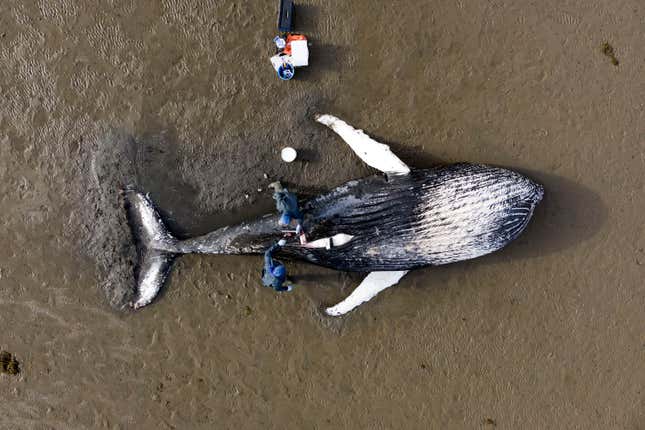
The runner-up for the ‘Research in Action’ category also explores the line between sea and surface, albeit in a more macabre way. The shot (obviously) shows a stranded humpback whale, which has died and is receiving a necropsy from researchers. The team concluded that the whale was drowned following entanglement.

The caption may have confused you, but indeed, these are bees that are part of a beekeeping project at the Chimpanzee Conservation Center in Guinea. Tradition honey harvesting in the region can cause deforestation, and a portion of the profits from the honey of these sustainably kept bees is dedicated to chimpanzee conservation.
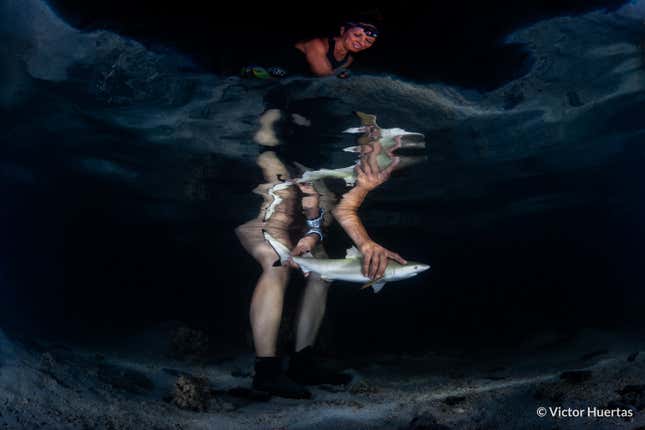
The runner-up in the ‘Protecting the Planet’ category is this shot of a researcher releasing a newborn shark. The shark has been tagged and its biometric data taken down. As seas warm, researchers are concerned about how the young sharks will be affected; tagging them allows ecologists to track the sharks as they grow throughout their lives.
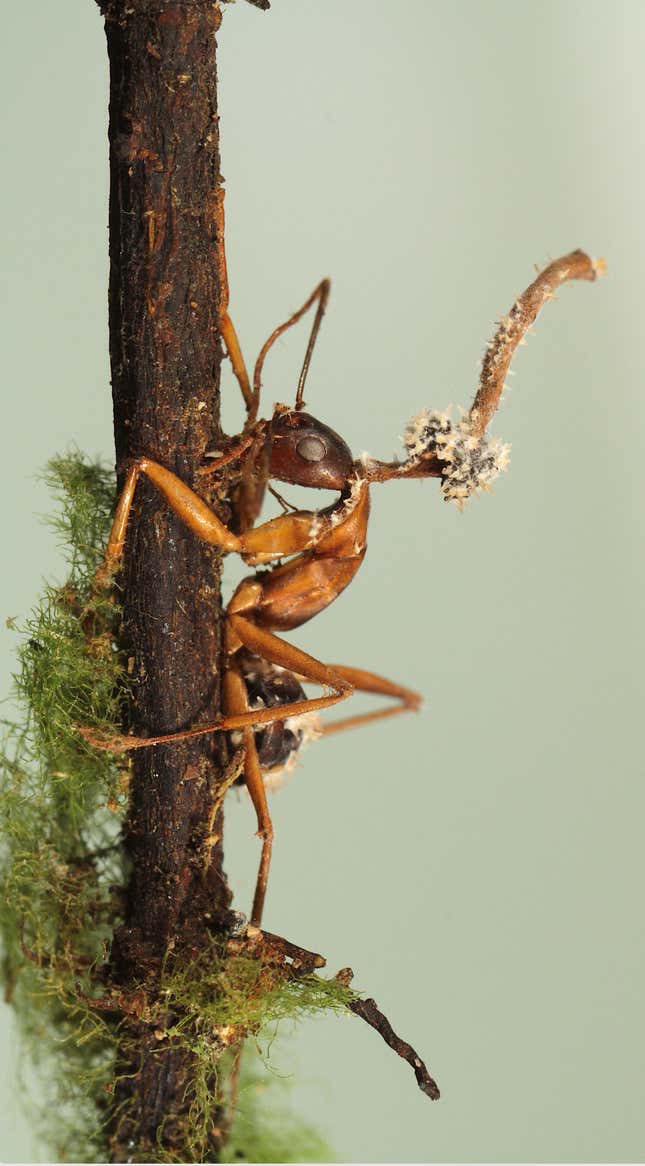
João Araújo is a mycologist at the New York Botanical Garden, where the macabre scene above unfolded. This image—the winner of the ‘Plants and Fungi’ category—shows an ant that has been harnessed by the zombie-ant fungus, which then is able to control the body of its host. Damn nature, you scary.
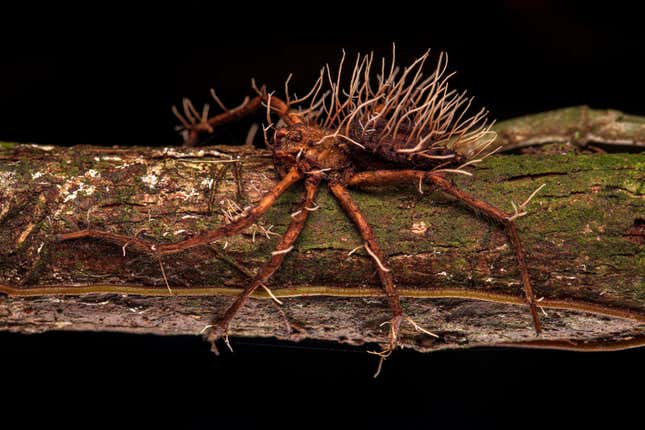
The runner-up in the fungal category is this similarly gnarly shot of a spider that has been harnessed by a fungus. “While it is not uncommon to encounter insects parasitised by ‘zombie’ fungi in the wild, it is a rarity to witness large spiders succumbing to these fungal conquerors,” said photographer Roberto García-Roa. The fungi sprouts like coral from the spider’s back and legs, making it appear hairy—while the spider isn’t really, its situation clearly is.

The winner of the ‘Paleoecology’ category is a digital image reconstructing a hadrosaur developing within its egg. “The relatively small size of the eggs, and the unspecialized nature of the dinosaur embryos inside, suggest that the earliest hadrosaurs laid small eggs and hatched altricial young,” said Jordan Mallon, a paleontologist at the Canadian Museum of Nature, in a BMC release describing the winning images. “More derived hadrosaurs eventually laid eggs nearly four times larger by volume and hatched correspondingly larger young.”
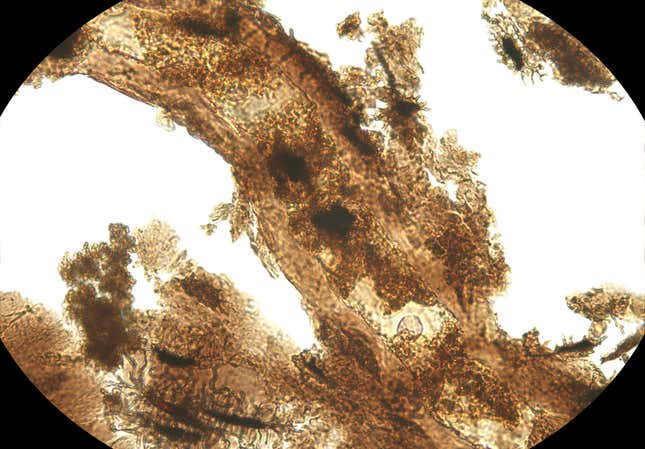
The runner-up image in the ‘Paleoecology’ category is a microscopic shot of an extracted diplodocid dinosaur blood vessel. The remnants of these cells are about 150 million years old. “Once considered paradoxical, the preservation of fragile soft tissues is now known to be the result of the chemical transformation of original proteins, lipids, and sugars occurring during fossilization – allowing such fragile evidence of past life to survive over millions of years!,” said Jasmina Wiemann, a molecular paleobiologist at Chicago’s Field Museum, and who submitted the image.
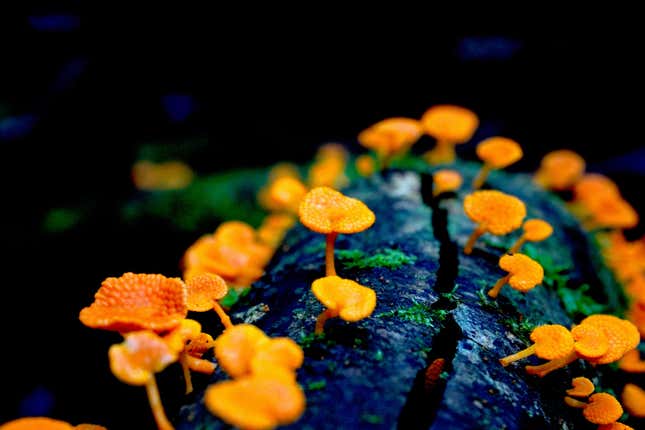
The overall winning image in the competition was this shot of an invasive orange pore fungus in the Australian rainforest. The fruiting bodies of the fungus are springing from deadwood. Their impacts on the Australian ecosystems they spread to is not yet entirely clear.






